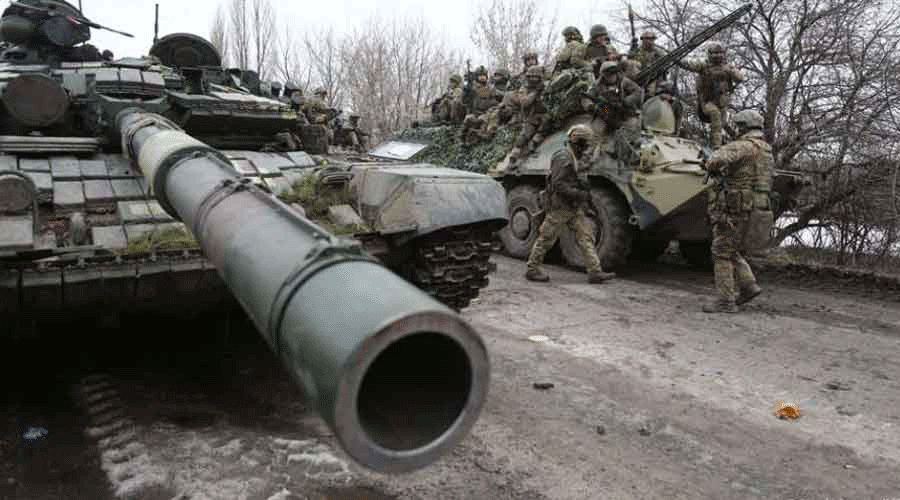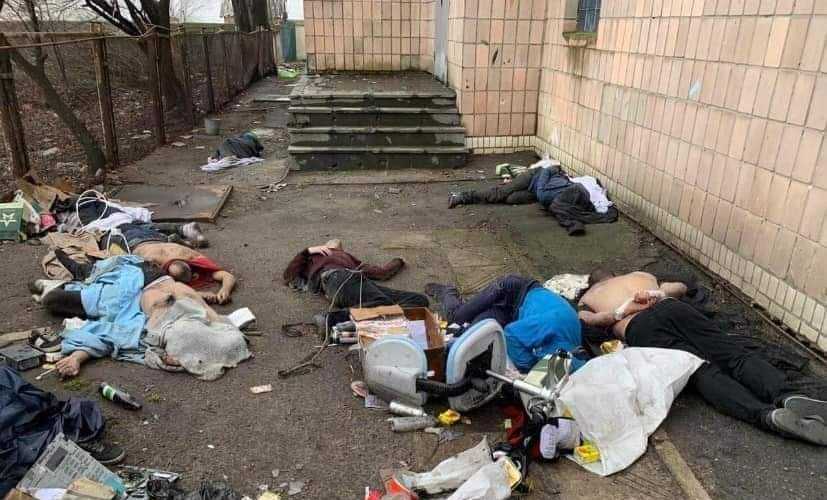Russian troops are in retreat from areas surrounding Kyiv, the Ukrainian capital, military analysts and Ukrainian officials say, a potentially stunning reversal in what could signal a broader shift in Russia’s assault in the sixth week of the war.
It is unclear whether the Russian troops are gone from the areas near the capital and further north for good or are trying to regroup after weeks of intense Ukrainian resistance and crippling logistical failures. But they appear, at least for now, to be following through on Russia’s stated intentions to focus more on the east, where they have a strong foothold and where military analysts said they were already scaling up their attacks.
For Kyiv, the retreat comes after early anxiety that the tanks gathering outside the city and pummelling nearby suburbs would advance into the city. According to the latest British defence intelligence assessment, Ukrainian forces are continuing to advance against the withdrawing Russian forces.
Russian forces are reported to have withdrawn from nearby Hostomel airport, which had been the centre of fierce fighting since the start of the invasion, the assessment added. New satellite images appeared to show that Russian military equipment had been removed in recent days from the airfield.
In the eastern part of the country, Russia’s main efforts are now focused on capturing the port city of Mariupol and solidifying control of the Donetsk and Luhansk regions, according to an analysis from the Institute for the Study of War, a Washington think tank. Local officials on Saturday said that fighting had intensified in some parts of the region.
A humanitarian convoy was set to try again on Saturday to deliver aid to the besieged southern city of Mariupol and help evacuate more people. The aid group had not been given the security guarantee it needed to make it to Mariupol on Friday, despite earlier Russian pledges to establish a cease-fire and a humanitarian corridor.
Russia said this week that it planned to redirect its forces from the region around Kyiv and focus on Ukraine’s east. On Saturday, the governor of the eastern Luhansk region said that intense fighting overnight in the city of Lysychansk and the nearby town of Toshkivka had left 31 buildings damaged or destroyed, most of them residential.
The top official of the Donetsk region, Pavlo Kyrylenko, said in a statement late on Friday that the area was “under constant fire and is partly occupied by Russian troops”. He added that it was impossible to establish the true number of civilian casualties and the extent of the destruction in the region’s besieged cities of Mariupol and Volnovakha.
Taking Mariupol has been a key objective in the Russians’ effort to cut Ukraine off from the Sea of Azov and create a land bridge to Crimea, which Moscow annexed in 2014.
Russian forces may also be trying to fully seize the Donetsk and Luhansk regions to help negotiate a favourable cease-fire and claim that it has achieved its purported aim of the invasion, according to the latest assessment from the Institute for the Study of War.
But in reality, Russia has been “forced to alter its operations after the failure of its initial campaign”, the institute said.
Russia’s forces have faced fierce Ukrainian resistance and mounting logistics and supply issues. A British intelligence assessment on Saturday said that Ukrainian forces were continuing to advance against withdrawing Russian forces near Kyiv and were trying to advance from the western suburb of Irpin farther north.
In the northeast of the country, Ukrainian forces have secured a key route in the eastern Kharkhiv region after heavy fighting, the assessment said. The city of Kharkiv — which is Ukraine’s second largest and is close to the Russian border — was a focal point of the early Russian assault.
The Institute for the Study of War said in its assessment that Russian forces in Kharkiv had abandoned their efforts to take the city and were likely to push south to link up with their fellow forces in the Luhansk region.
Even as Russia’s military repositions itself, the human toll of the war is growing. In the Odessa region, the head of the regional administration said that a strike from a missile launched from Crimea had hit a residential area and led to casualties.
In the central Ukrainian city of Poltava, the mayor said in a statement that a missile had struck infrastructure facilities, though the statement did not specify what the buildings were. Strikes by Russian forces on nearby Kremenchuk also hit residential buildings; it was unclear whether anyone had been killed.
New York Times News Service












